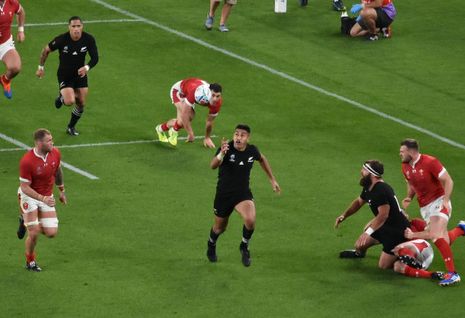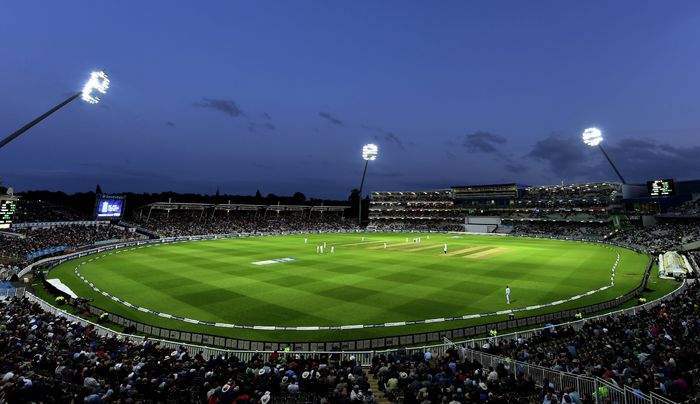World 12s: the future of rugby or a pipe dream?
In the wake of last week’s announcement (07/09), Joseph Hill questions whether the new tournament will be a winning fit for the rugby calendar

Former Rugby Football Union (RFU) chief Ian Ritchie announced last Tuesday (07/09) the launch of World 12s, a new 12-a-side international rugby tournament proposed to begin in August next year. As often seems to be the case with new-fangled competitions, there will be eight separate franchises based in locations across the globe, although the first iteration of the tournament is likely to be held predominantly in England.
The vision held by Ritchie, who is supported on the board by Gareth Davies (former Welsh Rugby Union boss) and Steve Tew (ex-chief executive of New Zealand Rugby Union), is for 192 of the world’s best players to compete in the competition. The majority of these players will be selected in an IPL-style auction from Tier One nations, but the proposed rules stipulate that at least two players from Tier Two countries, as well as one under-20 international, must be selected too. Strong Tier Two nations such as Georgia and Fiji will likely have many players selected, while weaker teams like Portugal may find themselves without much involvement in the event.
“the prospect of the world’s best rugby union athletes contesting in smaller-sized games is a considerably enticing product for casual fans”
A men’s tournament will run concurrently with a women’s competition, set to launch in 2023, across three weekends of rugby action. Equal prize money will be offered in both tournaments, a great stride forward for women’s rugby. World 12s is backed by a “UK-based financial consortium,” who are apparently prepared to inject a substantial amount of cash into the new event. Steve Hansen, former All Blacks coach, noted the financial incentives as a key factor in attracting the world’s top talent to the tournament.
Anyone who watched the three Lions’ Tests in South Africa this summer will understandably see World 12s as an antidote to the uninspiring rugby played by both teams. Small-sided rugby inevitably creates more space on the pitch, leading to higher scoring games and more free-flowing play. Teams made up of six forwards and six backs will match against each other in fifteen-minute halves, allowing for (hopefully) fast-paced attacking rugby. Other rule changes include conversions being taken as drop-kicks rather than from the tee, as well as a free-kick awarded after more than one scrum reset.
Traditionalist fans will highlight rugby sevens as proof of a viable, more exciting game, yet World 12s provides a different offering entirely. Sevens players gather relatively little notoriety outside of a hardcore group of fans, while the prospect of the world’s best rugby union athletes contesting in smaller-sized games is a considerably enticing product for casual fans. You will seldom see the most exciting players in international rugby, such as Cheslin Kolbe or Rieko Ioane, play sevens after they break into the 15-strong team, but they may well be present in a World 12s setup.
“Losing the world’s biggest players to such a tournament would have severe financial ramifications for clubs already ravaged by the pandemic”
The advantages of a major 12-a-side rugby tournament are clear to see, however there are a number of challenges that lie ahead for Ritchie and World 12s Ltd before their vision becomes a reality. Above all, clubs may be reluctant to release their brightest sparks into a cluster of high-intensity fixtures, particularly as the proposed scheduling of the tournament cuts into preseason preparation. Exeter Chiefs Director of Rugby Rob Baxter expressed concern about the contractual implications of players asking to be released for the tournament, especially given the sums of money likely to be extended for their services: “these people are going to offer [...] quite a lot of money to try and attract them to play.”
While World 12s has touted itself as an ensemble of the world’s best 192 players, it is likely that domestic clubs will work overtime in order to ensure that their biggest stars do not participate in the tournament. The risk of injury, as well as the lack of preseason, is incentive enough for teams to try and actively block players from temporarily leaving. If enough clubs manage to retain their best players, World 12s quickly descends from showcasing the elites of the game to a more subdued affair.
Beyond domestic clubs rejecting the premise of a new major tournament, there’s also the possibility that players themselves will refuse to join. After nearly two years of rugby being plagued by Covid-19, will the financial incentive be enough to convince fatigued players to take on even more sporting commitment? Hansen insists that on-field quality is motivation to participate in itself: “the concept of being able to spend three weeks with some of the best players in the world, rub shoulders on the training field, that is too good to turn down.” If some of those players are withheld by their clubs, however, we may see an avalanche of players withdrawing themselves from the competition.
Despite seeming an exciting innovation with a few hurdles to cross before it begins, it is strongly worth considering the potential repercussions of World 12s on the domestic rugby scene. If contracts cannot be negotiated to the point wherein players will be released for the tournament’s duration, players may find ways out of their club contracts, driven by a preference to exclusively participate in the lucrative 12s. Losing the world’s biggest players to such a tournament would have severe financial ramifications for clubs already ravaged by the pandemic, and some bastions of the game will likely fall upon hard times.
Although there is a long way to go until the intended start date of World 12s, serious questions are already cropping up just weeks after its initial launch. Unless such claims are addressed quickly and with clarity, the World 12s project could well be a short-lived venture.
 News / Cambridge academics stand out in King’s 2026 Honours List2 January 2026
News / Cambridge academics stand out in King’s 2026 Honours List2 January 2026 Interviews / You don’t need to peak at Cambridge, says Robin Harding31 December 2025
Interviews / You don’t need to peak at Cambridge, says Robin Harding31 December 2025 Comment / What happened to men at Cambridge?31 December 2025
Comment / What happened to men at Cambridge?31 December 2025 Features / “It’s a momentary expression of rage”: reforming democracy from Cambridge4 January 2026
Features / “It’s a momentary expression of rage”: reforming democracy from Cambridge4 January 2026 News / Varsity’s biggest stories of 202531 December 2025
News / Varsity’s biggest stories of 202531 December 2025











